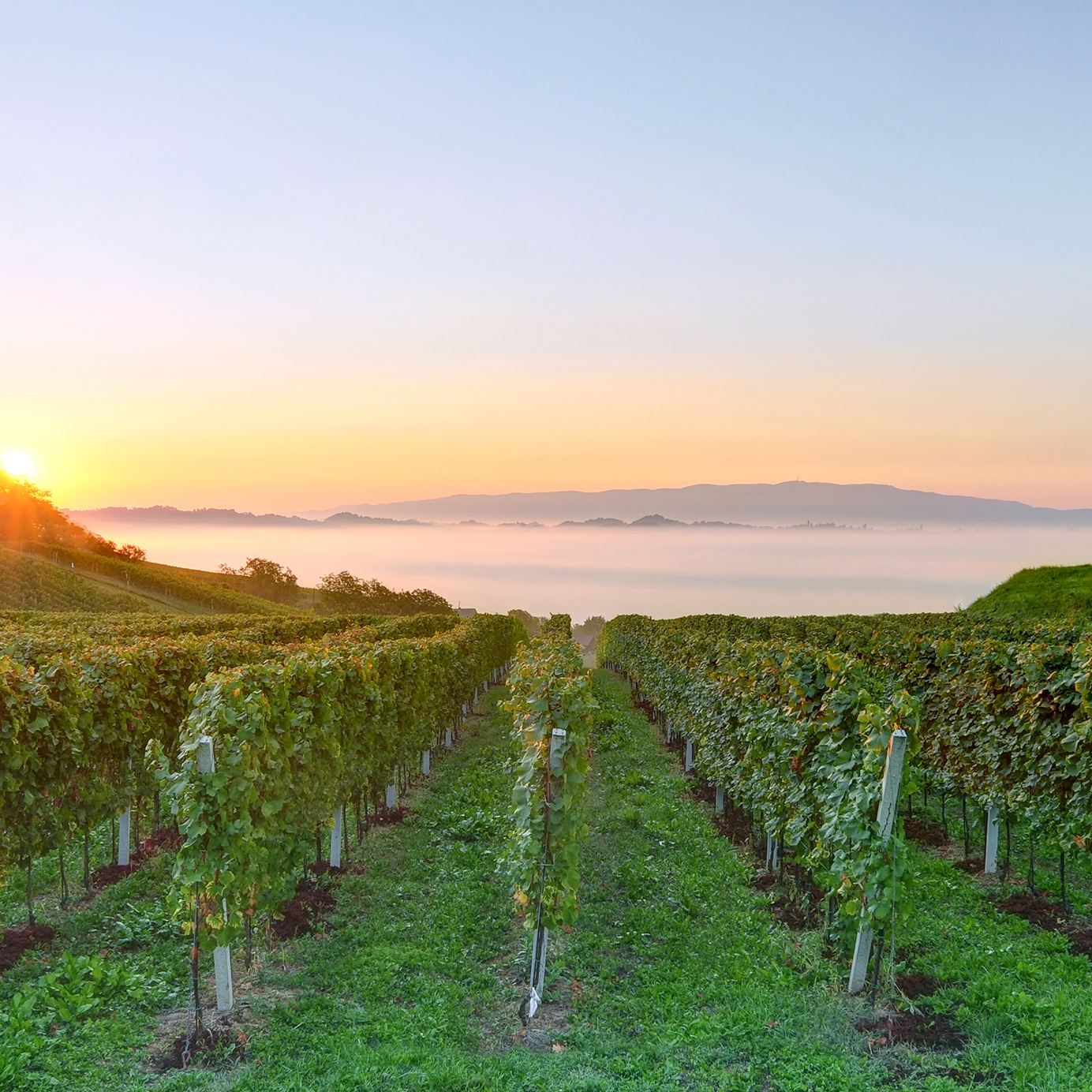
There is no Michelin-starred restaurant or sommelier dressed in stiff white garb when you arrive at Istenič winery in Bizeljsko, Slovenia. The modest building near the Croatian border is surrounded by hillocks with terraced vineyards, and looks nothing like the ritzy wineries you might see in Australia’s Yarra Valley or the Cape Winelands in South Africa.
You would be forgiven if you expected to taste something less than world-class sparkling wines in Istenič’s unpretentious tasting room with low, beamed ceilings and checkered curtains. Yet that’s exactly what Istenič produces. Forget the bells and whistles; at Istenič, it’s always been about what matters most: the quality of the wine. The founder is scrupulous about it.
Janez Istenič never intended on becoming a wine producer. He always had a keen interest in wine, and worked for a wine export company in the 1960s, but it was family circumstances that hauled him into the wine world.
“My father-in-law had a farm where he produced wine, but he had a hard time selling it,” Janez says. “I noticed that the wine he was producing had high acidity and low alcohol content.” In hopes of learning more about viticulture, Janez enrolled in a six- month scholarship where he spent a month in Champagne.
“He became the best student in the program,” says Miha Istenič, Janez’s son, who is also involved in the family business. When he returned to Slovenia, Janez put his newfound skills into practice and produced 100 bottles of wine in his father-in-law’s cellar. They were so successful he decided to produce more. And so he purchased more land.
In Bizeljsko, the climate is moderate (sunny in the day, cool in the evenings) and the terroir is rich in minerals. It’s an ideal place to produce sparkling wine.
“The terroir is characterized by a carbonate bedrock lithologies, mainly Triassic and Miocene dolomites and limestones,” Miha says. “It doesn’t only have perfect mineral composition, but it also offers excellent drainage conditions required for best vine growth.”
But it’s not just the conditions that make Istenič sparkling wines so successful, it’s the man and method behind them. For Janez, two of the most important factors are patience and time.
“My father has the patience to ensure we make the best-quality sparkling wine. Not many people have that vision,” Miha says.
Istenič’s sparkling wines are made in the methode classique. The matured grapes picked that day are immediately taken to the cellar, which is on the property, so there’s no transport involved. There’s no fermentation, either. Winemakers press the grapes in two hours and use free-run juice only. It’s the details that count.
Although the company has grown since its 1968 inception, it remains a family affair. Janez is still very much involved as well as Miha, his sister, Barbara, and wife, Svetlana.
“In a few years I expect my kids to become part of the company, too,” Miha says. Considering Istenič’s recent successes, they could probably use the extra hands.
In Slovenia, Istenič is what Moet & Chandon is in France. Walk into any wine shop in the country and Istenič bottles line the shelves. Open almost any restaurant wine list in Ljubljana and you’ll see Istenič emblazoned on the page in front of you.
Yet Istenič produces just 150,000 bottles of sparkling wine per year. This figure is modest (Moet & Chandon produces close to 30 million bottles a year), but Istenič is the second-largest wine producer in Slovenia.
“In our country, producers are not very big” Janez says. “There are only 200 sparkling wine producers in Slovenia, so it’s the competition from other countries that is big.”
The company exports to 24 countries (including China, Mexico, Japan, the U.K., and Italy) but 70 percent of its wine is still sold domestically.
“We want to increase moderately, but our key approach is to produce the best wines possible,” Miha says. For the Istenič family, as for many other boutique wineries across the globe, quality will always come above quantity, and success will never be measured in how many bottles fly off the shelves. “We are always asking ourselves how to find a perfect harmony in all aspects, because there is no straight way to success,” Miha says. “If your growth is 5 percent per year, in 50 years you will grow by 10 to 11 times. And this is great, isn’t it?”
